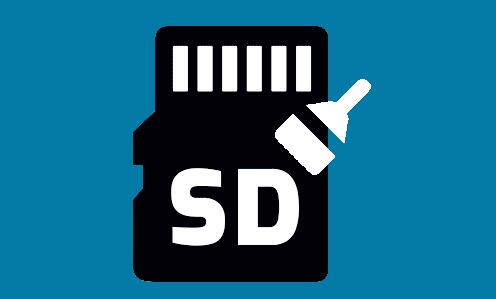As devices are used more frequently, issues can arise: corrupted files, a sudden lack of storage space, or the need to clear data for a fresh start. When faced with these challenges, many users may consider formatting their SD cards. However, the thought of losing valuable data often causes anxiety.
Formatting an SD card typically implies a complete erasure of its contents, leading to the understandable hesitation many feel before proceeding. But fear not! This guide is designed to demystify the formatting process and illuminate safe methods to format your SD card without losing any of your precious data. Whether you’re a seasoned tech user or a novice, you’ll learn everything you need to know to navigate this process confidently.
Understanding SD Card Formatting: We’ll explore what formatting means and why it’s necessary, including the various file systems involved.

Preparing for Formatting: Key steps to take before you format, including backup strategies and potential risks.
Methods to Format an SD Card: A detailed look at different formatting techniques across various operating systems, including Windows, macOS, and Android devices.
Recovery Options: What to do if something goes wrong, including how to recover lost data.
Preventative Measures: Best practices to keep your data safe in the future.
1. SD Card Formatting
Before diving into the steps to format an SD card, it’s essential to understand what formatting actually entails. When you format an SD card, you are essentially preparing it for use by creating a file system. This process organizes how data is stored and retrieved.
There are several file systems commonly used for SD cards:
FAT32: This is the most widely supported file system, compatible with almost all devices. However, it has a file size limit of 4GB.
exFAT: Designed for flash drives and SD cards, exFAT can handle larger files and is suitable for modern devices.
NTFS: This file system is primarily used in Windows. It supports large files but may not be compatible with many non-Windows devices.
Each of these file systems has its strengths and weaknesses, and the choice often depends on how you intend to use your SD card.
2. Preparing for Formatting
Before you start formatting your SD card, preparation is key to ensure your data remains safe. Here are crucial steps to follow:
Backup Your Data: Always create a backup of your files before formatting. You can do this by copying data to your computer, another storage device, or a cloud service.
Check for Errors: Use tools to check the integrity of your SD card. On Windows, you can right-click the drive, select ‘Properties,’ and navigate to the ‘Tools’ tab to check for errors.
Identify File System: Knowing the current file system can guide your formatting choice. You can find this information in your computer’s file management system.
3. Methods to Format an SD Card
Formatting on Windows
Insert the SD Card: Use an SD card reader or insert it directly into your laptop/PC.
Open File Explorer: Locate your SD card in the ‘This PC’ section.
Right-Click and Select Format: Right-click on the SD card icon and select ‘Format.’
Choose File System: From the dropdown, choose FAT32 or exFAT, depending on your needs.
Quick Format Option: Check the ‘Quick Format’ box to speed up the process (this will not erase the data but may not check for errors).
Start Formatting: Click ‘Start’ and confirm your choice.
Formatting on macOS
Insert the SD Card: Connect the SD card to your Mac.
Open Disk Utility: Find Disk Utility in Applications > Utilities.
Select Your SD Card: Choose your SD card from the list on the left.
Erase: Click the ‘Erase’ button at the top.
Choose Format: Select either MS-DOS (FAT) for FAT32 or ExFAT.
Name Your Card: Give your SD card a name, if desired, and click ‘Erase’ to start formatting.
Formatting on Android
Insert the SD Card: Make sure your SD card is properly inserted.
Open Settings: Go to the settings menu on your Android device.
Storage: Select ‘Storage’ or ‘Device Maintenance’ (the wording may vary).
Select SD Card: Tap on your SD card.
Format: Look for an option to format the card, and confirm your action.
4. Recovery Options
Despite your best efforts, there may still be instances where data is lost or corrupted. If this happens, don’t panic. Here are steps you can take to recover lost data:
Use Recovery Software: Panda Assistant
Consult Professionals: If the data is particularly valuable or complex, consider reaching out to a professional data recovery service.
5. Preventative Measures
To avoid future data loss, consider the following best practices:
Regular Backups: Make it a habit to back up your data regularly.
Safely Remove Hardware: Always use the “Eject” option when removing your SD card to avoid data corruption.
Keep Software Updated: Ensure your operating system and any relevant software are up to date to prevent compatibility issues.
About us and this blog
Panda Assistant is built on the latest data recovery algorithms, ensuring that no file is too damaged, too lost, or too corrupted to be recovered.
Request a free quote
We believe that data recovery shouldn’t be a daunting task. That’s why we’ve designed Panda Assistant to be as easy to use as it is powerful. With a few clicks, you can initiate a scan, preview recoverable files, and restore your data all within a matter of minutes.
Subscribe to our newsletter!
More from our blog
See all postsRecent Posts
- Data recovery salt lake city utah 2025-04-18
- Data recovery sacramento 2025-04-18
- Data recovery miami 2025-04-18

 Try lt Free
Try lt Free Recovery success rate of up to
Recovery success rate of up to









